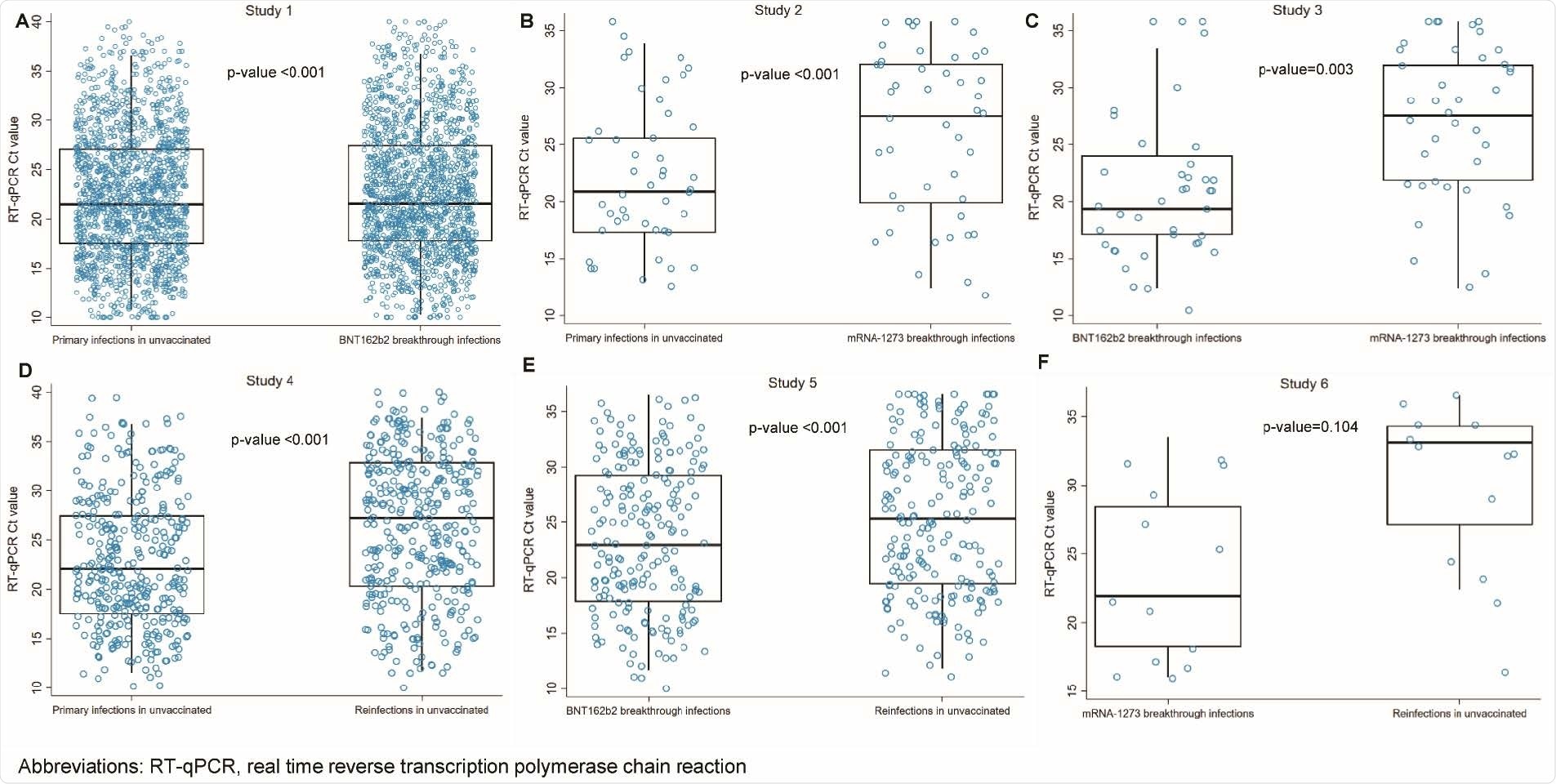A team of scientists from Qatar and the United States has recently studied the viral transmission potential of individuals with primary severe acute respiratory syndrome coronavirus 2 (SARS-CoV-2) infection, reinfection, or vaccine breakthrough infection. The findings reveal that unvaccinated individuals with primary infection are 50% more likely to transmit infection than vaccinated individuals with breakthrough infections. The study is currently available on the medRxiv* preprint server.
Coronavirus disease 2019 (COVID-19) vaccines currently rolling out globally have shown strong protective efficacy against SARS-CoV-2 infection and symptomatic COVID-19. However, there is accumulating evidence suggesting that the vaccines may not always induce sterilizing immunity against infections caused by novel viral variants. Although multiple vaccine breakthrough infections have been identified in many countries, it is still uncertain whether these cases are infectious enough to transmit the virus to others. In this context, it is generally assumed that vaccine-induced reduction in viral replication and subsequent viral load account for faster clearance of infection and lesser possibility of viral transmission.
In the current study, scientists have investigated the effect of vaccination on viral transmission potential by comparing viral loads in vaccinated individuals with breakthrough infections and unvaccinated individuals with primary infection. Moreover, they have investigated the effect of previous infection on reinfection in unvaccinated individuals. For this purpose, they have compared the viral loads in individuals with SARS-CoV-2 reinfection or primary infection.
Study design
As a measure of viral load, the scientists analyzed polymerase chain reaction (PCR)-generated cycle threshold (Ct) values of 384,452 individuals with primary infections, 1,695 with reinfection, 4,777 with BNT162b2 (Pfizer/BioNTech) breakthrough infections, and 306 with mRNA-1273 (Moderna) breakthrough infections.
The BNT162b2 breakthrough infections occurred in 0.61% of fully vaccinated population, and the mRNA-1273 breakthrough infections occurred in 0.09% of fully vaccinated population.
Important observations
Among all PCR-confirmed infections, breakthrough infections in vaccinated or previously infected individuals exhibited lower viral loads than primary infections in unvaccinated individuals. Specifically, the viral load was lowest in unvaccinated individuals with reinfection, followed by mRNA-1273 breakthrough infections and BNT162b2 breakthrough infections sequentially.
Similar findings were obtained in analyzes that included only randomly diagnosed asymptomatic infections. However, by limiting the analysis to only symptomatic infections, the lowest viral load was observed in mRNA-1273 breakthrough infections, followed by reinfections and BNT162b2 breakthrough infections sequentially. Notably, among all mRNA-1273 breakthrough infections, very few were symptomatic.

RT-qPCR Ct values in the randomly diagnosed (asymptomatic) SARS-CoV-2 infections. Distribution of these Ct values in the six pairwise comparisons between primary infections in unvaccinated individuals, reinfections in unvaccinated individuals, BNT162b2-vaccine breakthrough infections, and mRNA-1273-vaccine breakthrough infections. A randomly diagnosed infection was defined as an RT-qPCR-positive test conducted with no prior reason to suspect infection and no reported presence of symptoms compatible with a respiratory tract infection. That is, the RT-qPCR test was conducted as part of a survey (random testing campaigns), for routine healthcare testing, for pre-travel requirement, or at port of entry upon arrival in Qatar. Boxplots center lines indicate the median Ct values, box limits indicate the 25% and 75% quartiles, and whiskers indicate maximum and minimum observations within 1.5 of interquartile range.
Infectiousness of breakthrough infections
It is empirically assumed that viral load is directly proportional to the volume of infectious viruses. Estimations made in the study from this assumption revealed that breakthrough infections in vaccinated or previously infected individuals had significantly lower infectiousness compared to primary infections in unvaccinated individuals.
The analyses, including randomly diagnosed asymptomatic and symptomatic infections, revealed that the level of infectiousness was highest in primary infections, followed by BNT162b2 breakthrough infections, mRNA-1273 breakthrough infections, and reinfections sequentially.
Specifically, BNT162b2 breakthrough infections, mRNA-1273 breakthrough infections, and reinfections were only 0.41-fold, 0.11-fold, and 0.06-fold as infectious as primary infections, respectively.
Study significance
The study demonstrates that individuals having immunity against SARS-CoV-2 from vaccination or prior infection are more likely to have lower viral loads upon infection/reinfection. In addition, since viral load is directly correlated with the amount of culturable or infectious viruses, the study findings indicate that the risk of viral transmission from vaccinated or previously infected individuals is relatively lower than that from unvaccinated individuals with primary infection.
Overall, the study highlights that COVID-19 vaccines are effective in reducing the rate of person-to-person viral transmission, in addition to preventing primary SARS-CoV-2 infections.

 This news article was a review of a preliminary scientific report that had not undergone peer-review at the time of publication. Since its initial publication, the scientific report has now been peer reviewed and accepted for publication in a Scientific Journal. Links to the preliminary and peer-reviewed reports are available in the Sources section at the bottom of this article. View Sources
This news article was a review of a preliminary scientific report that had not undergone peer-review at the time of publication. Since its initial publication, the scientific report has now been peer reviewed and accepted for publication in a Scientific Journal. Links to the preliminary and peer-reviewed reports are available in the Sources section at the bottom of this article. View Sources
Journal references:
- Preliminary scientific report.
Abu-Raddad LJ. 2021. Effect of vaccination and of prior infection on infectiousness of vaccine breakthrough infections and reinfections, medRxiv, https://doi.org/10.1101/2021.07.28.21261086, https://www.medrxiv.org/content/10.1101/2021.07.28.21261086v1
- Peer reviewed and published scientific report.
Abu-Raddad, Laith J., Hiam Chemaitelly, Houssein H. Ayoub, Patrick Tang, Peter Coyle, Mohammad R. Hasan, Hadi M. Yassine, et al. 2022. “Relative Infectiousness of SARS-CoV-2 Vaccine Breakthrough Infections, Reinfections, and Primary Infections.” Nature Communications 13 (1): 532. https://doi.org/10.1038/s41467-022-28199-7. https://www.nature.com/articles/s41467-022-28199-7.